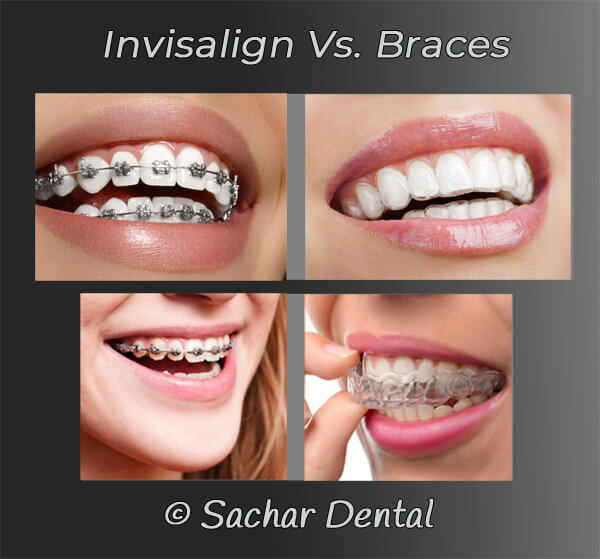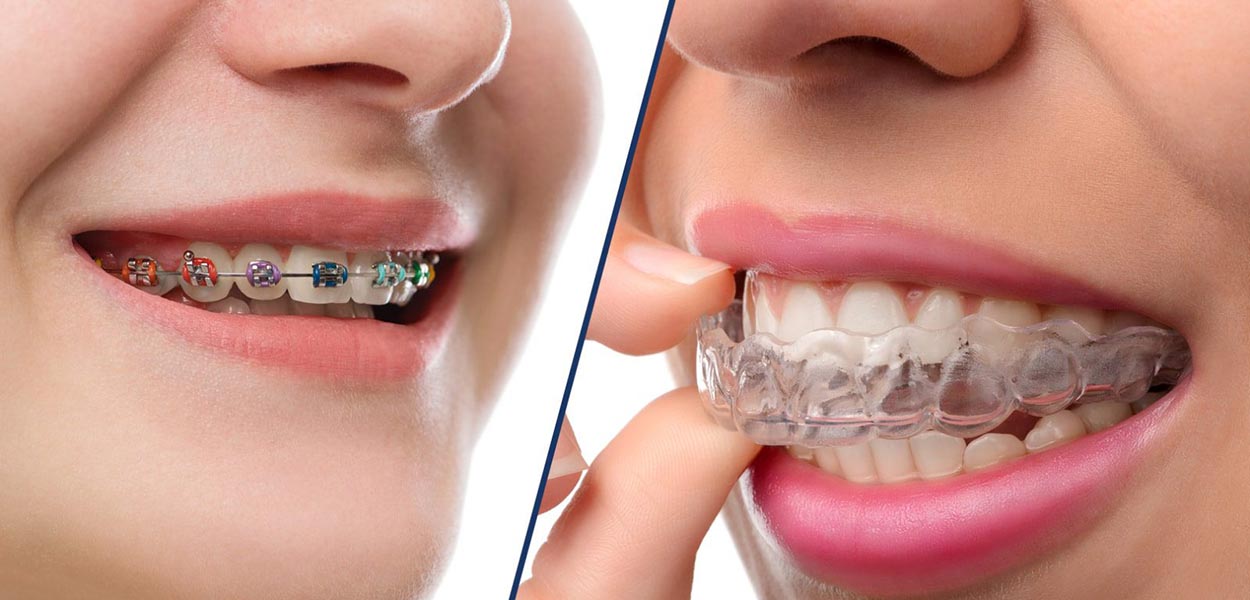The Cost of Invisalign: Comprehending the Investment in Your Smile
Invisalign vs. Typical Braces: Which Choice Is Right for You?
When thinking about orthodontic treatment, the choice in between Invisalign and standard dental braces provides a number of essential elements that warrant cautious assessment. Invisalign provides a discreet choice with removable aligners, while standard braces supply a much more visible yet reliable solution for severe imbalance. Each option includes distinct benefits and drawbacks connected to aesthetics, convenience, therapy duration, and expense. Understanding these subtleties is essential for making an educated decision that lines up with your personal preferences and way of life. The inquiry stays: which choice will finest satisfy your orthodontic needs and expectations?
Summary of Treatment Options

On the other hand, conventional dental braces contain steel braces and cords that are adhered to the teeth. This technique applies constant stress gradually to attain positioning. While efficient for complex orthodontic problems, typical braces need routine check outs for adjustments and can position difficulties in keeping oral hygiene because of the trouble of cleansing around cords and brackets.
Both choices have their merits, and the option often depends upon details dental conditions, way of living choices, and patient compliance. Ultimately, consulting an orthodontic professional is vital for determining the most appropriate treatment strategy customized to private demands. Understanding the nuances of each choice can dramatically affect the general success of orthodontic treatment.
Visual Considerations
A considerable variable affecting the selection in between Invisalign and traditional braces is the visual appeal each therapy supplies. Invisalign aligners are crafted from clear plastic, making them basically invisible when worn.
In contrast, traditional braces include metal braces and wires, which can be much more recognizable. While advancements in orthodontic technology have caused the advancement of smaller sized braces and tinted elastics, conventional dental braces still keep an even more obvious account. For some individuals, the exposure of dental braces might deter them from seeking required treatment.
Ultimately, the choice between Invisalign and typical dental braces may rest on personal preferences pertaining to aesthetics. Patients who focus on discernment frequently lean toward Invisalign, while those that are much less concerned about presence may choose for typical braces. Recognizing the aesthetic effects of each alternative is critical for making an informed choice that lines up with one's way of life and preferences.
Convenience and Convenience

In terms of benefit, Invisalign aligners are removable, allowing people to appreciate their preferred foods without restriction and preserve optimum oral health. Cleaning and flossing are simplified, as the aligners can be gotten throughout these routines, whereas traditional dental braces call for careful navigating around brackets and cables.
Additionally, Invisalign's progressive system enables for fewer orthodontic gos to. Clients normally get multiple collections of aligners simultaneously, which can streamline the treatment procedure and lower time spent in the orthodontist's chair. On the other hand, traditional dental braces necessitate normal modifications, making them much less practical for those with busy routines. Invisalign. Overall, the convenience and convenience of Invisalign make it an enticing choice for lots of individuals looking for orthodontic therapy.
Treatment Duration and Performance
While both Invisalign and standard dental braces are effective in remedying oral misalignments, the period of treatment can differ dramatically between both options. Normally, Invisalign therapy can take anywhere from 12 to 18 months, depending upon the intricacy see this of the situation. The clear aligners work by slowly moving teeth into their desired settings, and regular follow-ups with an orthodontist aid guarantee development continues to be on course.
On the other hand, standard braces commonly call for a longer dedication, typically varying from 18 months to 3 years. This results from their set nature and making use of wires and braces, which can be a lot more efficient for serious imbalances and complicated cases (Invisalign). The therapy performance of traditional braces is well-documented, as they permit for specific changes and higher control over tooth movement
Ultimately, the choice between Invisalign and traditional braces might depend upon both the awaited therapy period and the details oral concerns available. Consulting with an orthodontist is critical, as they can provide customized referrals based upon private requirements, making certain the picked approach lines up with preferred end results and durations.
Cost Contrast and Insurance Policy Alternatives
Price plays a substantial duty in the decision-making process for people taking into consideration orthodontic therapy, whether selecting go to these guys Invisalign or traditional dental braces. Usually, the cost of Invisalign varieties from $3,000 to $8,000, while conventional dental braces commonly set you back between $2,000 and $6,000. Variables influencing these prices include the complexity of the situation, the duration of therapy, and geographical location.
Insurance policy insurance coverage can substantially impact out-of-pocket expenditures. Numerous dental insurance policy plans provide partial coverage for orthodontic therapies, however the specifics can vary widely. It is critical for people to examine their insurance coverage to identify the extent of insurance coverage for either alternative. Normally, typical dental braces might be a lot more frequently covered by insurance strategies contrasted to Invisalign, which some insurers categorize as an aesthetic treatment.
Furthermore, several orthodontic practices offer flexible layaway plan, making both therapy alternatives extra obtainable. Individuals must ask about possible financing options and discounts for upfront repayments. Assessing the overall cost, consisting of insurance policy benefits and settlement plans, is vital for making a notified decision that lines up with both aesthetic preferences and budget considerations.

Final Thought
In recap, the selection in between Invisalign and traditional braces hinges on multiple elements, consisting of visual choices, comfort, treatment duration, and cost. Invisalign provides a discreet, removable option that assists in dental health and nutritional flexibility, while conventional braces may be better for complex view it oral problems and usually come with a lower cost point. Ultimately, appointment with an orthodontist is necessary to assess private conditions and establish one of the most appropriate therapy choice for accomplishing optimal oral placement.
When taking into consideration orthodontic therapy, the option in between Invisalign and typical dental braces presents several important aspects that warrant careful examination.Contrasting Invisalign and traditional dental braces discloses unique therapy choices for orthodontic improvement.While both Invisalign and traditional braces are efficient in fixing dental misalignments, the period of treatment can differ substantially in between the 2 choices.Price plays a significant role in the decision-making procedure for people considering orthodontic therapy, whether choosing for Invisalign or traditional braces.In recap, the option between Invisalign and typical braces hinges on several factors, consisting of aesthetic choices, convenience, treatment period, and expense.